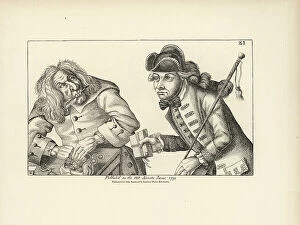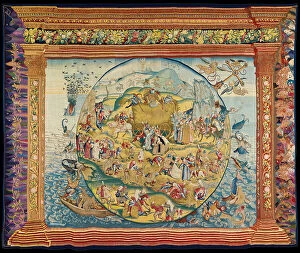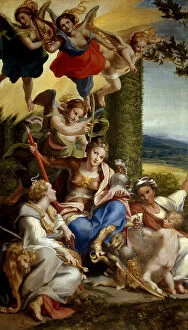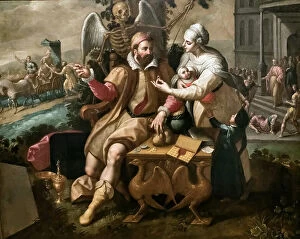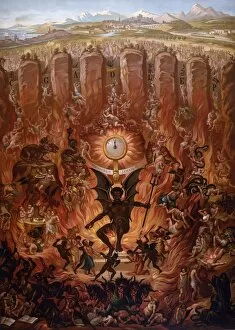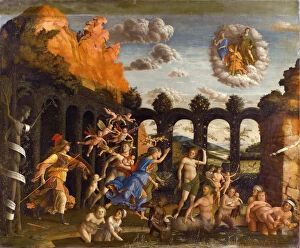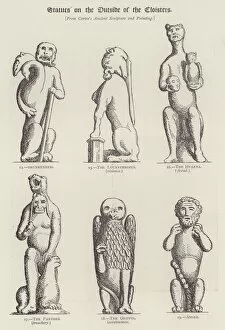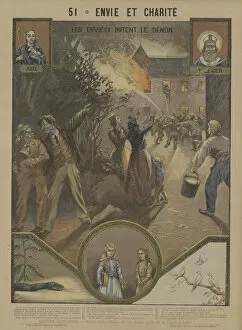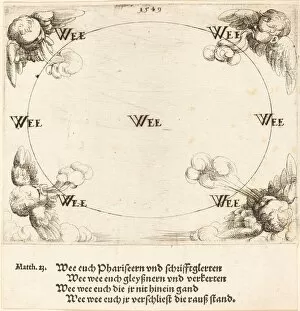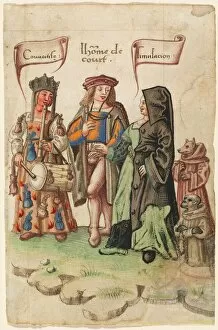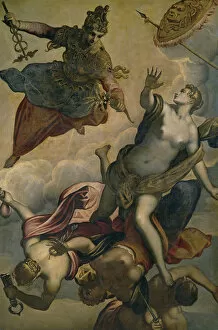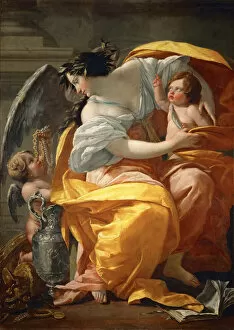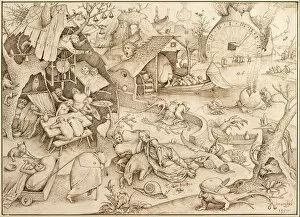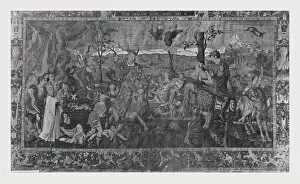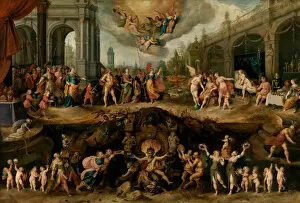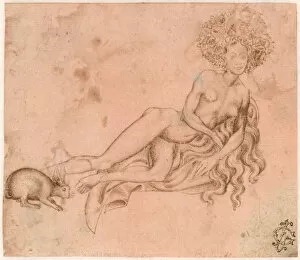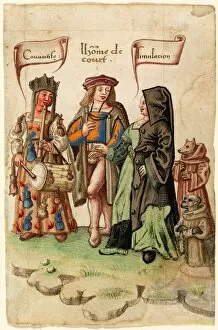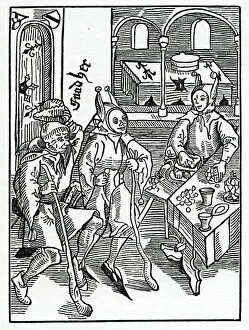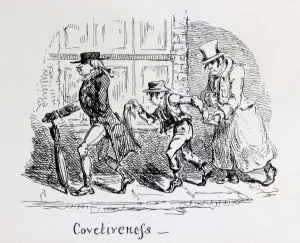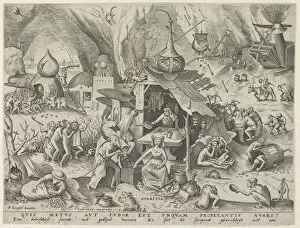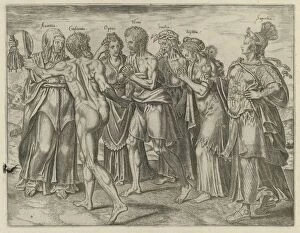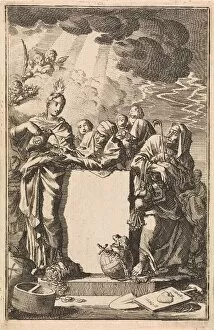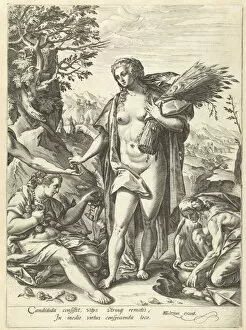Covetousness Collection
"Covetousness: The Alluring Temptation and its Consequences" In the realm of art, it has been a recurring theme, depicted through various mediums and periods
For sale as Licensed Images
Choose your image, Select your licence and Download the media
"Covetousness: The Alluring Temptation and its Consequences" In the realm of art, it has been a recurring theme, depicted through various mediums and periods. From ancient engravings to vibrant oil paintings, artists have sought to capture the essence of this insidious vice. One such portrayal is "The Archangel Michael Throwing Satan out of Heaven, " where covetousness takes center stage as Satan's desire for power leads to his ultimate downfall. This cautionary tale reminds us that unchecked desires can lead to our own undoing. "The Seven Virtues" by Pesellino showcases the opposing force against covetousness - virtues such as temperance and humility. These virtuous qualities act as shields against the allure of material possessions, reminding us that true fulfillment lies in inner contentment rather than external acquisitions. On the outside walls of cloisters, statues stand tall depicting scenes from religious texts. Among them are depictions of "Hell and the Seven Sins, " emphasizing how covetousness is one among many sins that can condemn one's soul if left unchecked. In "Blindness and Cupidity Chasing Joy from the City, " we witness an allegorical representation where cupidity personified relentlessly pursues joy while blindfolded. Coveting worldly pleasures blinds us to genuine happiness found within ourselves and our relationships with others. Engravings like "The Fisherman and the Porter" illustrate fables warning against excessive greed. It narrates how a fisherman's unquenchable thirst for wealth ultimately costs him dearly – a poignant reminder that material gain often comes at great personal expense. Throughout history, artists have also explored covetousness within broader contexts. In "The Seven Deadly Sins, " each sin is portrayed individually but interconnectedly; highlighting how coveting what others possess breeds envy, gluttony, wrath, sloth, pride, lust, and ultimately leads to spiritual decay.

